Online version
On this page
- From the Director
- Achievements celebrated at AIHW Australia Day awards
- Australia's health workforce continues to grow
- More cases of prostate cancer, but survival rates improve
- More emergency department patients 'seen on time' for urgency category
- HPV vaccine reduces cervical abnormalities that are precursors to cervical cancer
- Most prison entrants smoke and find quitting in prison tough
- More adoptions of Australian children
- Teenage births in decline
- More than half of permanent aged care residents show signs of depression
- One in 10 Aussies used mental health services in 2010-11
- new releases
From the Director
Welcome to the first edition of AIHW Access for 2014.
So much was achieved at the AIHW throughout 2013, and 2014 is shaping up to be just as busy.
Through the combined efforts of all our staff, the AIHW released a huge number of reports and web-based resources last year, many of which are highlighted in this issue.
These resources have provided new insights and understandings to governments and our key stakeholders as they confront difficult issues across the health and welfare sectors.
Some of these were new information that the Institute published for the very first time, such as the first ever Australian study into depression in residential aged care.
Others highlighted information that was presented in new or collaborative ways, for instance, a study between the AIHW and the Victorian Cytology Service (VCS), which was the first in the world to show that a population-based human papillomavirus vaccination program has resulted in a fall in cervical abnormalities.
And some were annual reports that continue to underscore the importance of the Institute's work for the broader community, such as our series on Australian hospital statistics, including a specific look at emergency department waiting times and another showing a drop in the in the rate of the infection Staphylococcus aureus bacteraemia in public hospitals.
Our Cancer and Screening Unit had another incredibly busy year, with one of the highlights being the release of the first comprehensive national report on prostate cancer, which was released in November.
And just before Christmas the release of Australia's mothers and babies 2011 showed us that more babies are being born now than 10 years ago.
With the start of the new year came a chance to recognise, at our annual Australia Day staff awards, some of the great work currently in progress at the AIHW (some of which is detailed on page 4).
These awards recognise outstanding contributions by a number of our staff, whose efforts have significantly added to our ongoing success as an agency, and I congratulate all the recipients.
And as we gear up for a huge year in 2014, just some of the things that lie ahead include:
- the move to our new building-1 Thynne Street-in June
- the development of our new Strategic Directions for 2015 -18, which will be fully updated by the end of 2014
- the release of Australia's health 2014 in June
- changes to the Privacy Act 1988, with several implications for AIHW, and
- our ongoing business transformation roll-out.
Over the next couple of months the AIHW also has an extensive program of releases, so be sure to keep an eye on , and if you want to follow up in any more detail on any of the subjects raised here, then the full reports are of course also available to you free of charge on the AIHW website.


David Kalisch
Director (CEO), AIHW
Achievements celebrated at AIHW Australia Day awards
A year's worth of achievements have been recognised at the AIHW's 2014 Australia Day Awards.
'The awards celebrate the outstanding contribution of a number of AIHW staff, and recognise their role in aiding the work of the Institute as a whole,' said AIHW Director and CEO David Kalisch.
This year's awards saw recipients celebrated for a range of achievements, highlighting the diverse nature of the Institute's work.
'Innovation is a key priority at the Institute, and many recipients of the awards were celebrated for their commitment to developing new and better ways to do their work,' Mr Kalisch said.
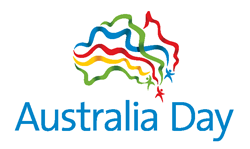
Phil Anderson, Head of the Data Linkage Unit, received an award this year for the very significant impact of his work on population health research using linked data, as well as his role in fostering a culture of innovation through research collaborations.
In addition to establishing the AIHW's data linkage function in 2005 and currently leading the wide range of linkage work undertaken by the Institute, Phil has personally been involved in supporting, and often undertaking, population level health research in a number of areas.
'Phil takes significant time and care to help researchers understand the available data and how it can-and can't-support their study aims. He works with early career researchers to help them develop their study protocols and later career researchers to refine theirs,' Mr Kalisch said.
Phil's contributions to population health research are well known outside the AIHW, and he has been involved in the data analysis of many external projects.
'The willingness of researchers to make Phil a co-author is indicative of the value he has added to a wide range of work with external researchers over a number of years, in both advisory and hands-on roles,' Mr Kalisch said.
The AIHW's Cancer and Screening Unit also received an award, for their work in cancer data development and reporting, as well as cancer research.
'This high performing team has demonstrated great flexibility and innovation in consistently delivering quality products while also establishing the National Centre for Monitoring Cancer,' Mr Kalisch said.
'They have developed constructive relationships with stakeholders including clinicians, researchers, data providers, funders and policy makers and their work has been acknowledged and supported at the most senior levels of the cancer community.'
The team has also embraced new technologies to streamline their processes, and have shown commitment to reviewing their work to meet audience needs.
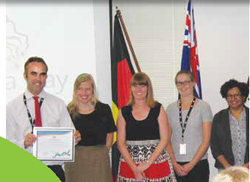
A third award was received by Nikki Schroder, for her role in the management and reporting of mental health administrative data.
'Nikki is a true expert-bordering on 'national treasure'!-in the field of mental health administrative data, and is held in very high esteem by government and non- government stakeholders,' Mr Kalisch said.
Nikki's work involves management of multiple, inter-connected and complex datasets, but she also possesses the important ability to see the 'big picture'.
In a recent major project, Nikki has utilised and adapted contemporary data visualisation techniques to improve accessibility and transparency of mental health data- processes that have paved the way for similar activities to be undertaken throughout the Institute.
The Institute's Indigenous Community and Health Service Reporting Unit were also recognised for preparing the first national report based on the Indigenous-specific primary health care services national Key Performance Indicator (nKPI) data collection.
'This project was critical, and was required urgently to inform policy to be used for securing future funding for this collection,' Mr Kalisch said.
The team rose to the challenge, and worked tirelessly to develop and test innovative ways of analysing and presenting the data.
'The innovation, timeliness and professionalism of the Indigenous Community and Health Service Reporting Unit showcase what the AIHW is all about,' Mr Kalisch said.
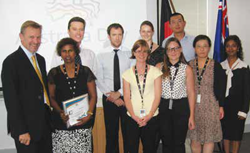
One recipient of this year's Australia Day Awards is a testament to the value of the AIHW's Graduate Program.
'Jess Cargill arrived as a Graduate in 2012 and quickly became a 'go to' staff member across the Ageing and Aged Care Unit and, in some cases, the Institute as a whole,' Mr Kalisch said.
'Jess was responsible for drafting the 'Older People' chapter in Australia's welfare 2013 -with a chapter that became an exemplar for other chapters, attracting praise from external reviewers and required very little in terms of redrafting.'
Jess has volunteered for many projects outside the scope of her normal work, participating in internal reviews of new business processes, as well as taking on an authoring role in the production of this year's upcoming Australia's health 2014 report.
The AIHW's Australia Day Awards also highlight special work undertaken by the Institute.
'One example of this is the Closing the Gap Clearinghouse, ably managed by Therese Bourke,' Mr Kalisch said.
The Closing the Gap Clearinghouse is an online source of information on best practice and success factors to close the gap in Indigenous disadvantage and is jointly funded by all Australian governments. The Clearinghouse is produced by the AIHW and the Australian Institute of Family Studies.
'Therese has made a substantial contribution to the Clearinghouse's growth and development since taking on the role in 2009.'
Therese and her team competently manage the Clearinghouse website, the helpdesk and two research collections. The reputation of the AIHW has been significantly enhanced through Therese's dedication and hard work to a very important project.
Stakeholder engagement is central to any organisation's success, and the AIHW's Anne Reader, Head of the Executive Unit, was recognised at this year's Australia Day Awards for her role in overseeing the support of the Director and other key Committees.
'Anne also plays an important role in Board processes and secretariat functions, and her professional, confidential, courteous dealings in this work has ensured AIHW's excellent reputation with its key stakeholders continues,' Mr Kalisch said.
Anne's hard-working nature was made clear when- in addition to her challenging day job-she single- handedly developed a Health Information Strategic Plan for Kiribati. During Anne's three visits to the country, she developed and tested the Plan in conjunction with the Kiribati Ministry of Health and Medical Services. Her hard work in Kiribati highlights the varied skills-and important 'real world' achievements-of AIHW staff.
'The AIHW has many achievements worth celebrating, every day, week and month,' Mr Kalisch said.
'While the awards are about recognising specific staff and their achievements, it's important to remember all the great work that goes on largely unnoticed.
All our work-and all our staff-contribute to our organisation's ongoing success.'
Australia's health workforce continues to grow
Australia's health workforce has grown in recent years, according to several new AIHW reports.
The reports cover the medical, nursing and midwifery, and dental workforces, and show growth across all three sectors.
Medical workforce 2012 shows that there were 91,504 medical practitioners registered in Australia in 2012, with the number of medical practitioners actually employed by medicine rising by over 16% between 2008 and 2012.
Dental workforce 2012 shows a more modest rise in employed dentists of about 5% in 2012. There were a total of 19,462 dental practitioners registered in Australia in that year.
The third report, Nursing and midwifery workforce 2012, shows that there were around 334,000 nurses and midwives registered in Australia in 2012, with the number employed in nursing and midwifery rising by about 7.5% between 2008 and 2012.
'All three reports show that supply of medical and dental practitioners varies across different areas of Australia,' said Head of the AIHW's Expenditure and Workforce Unit Dr Adrian Webster.
The supply of medical practitioners was generally greater in Major cities than in Remote or Very remote areas. However, the supply of general practitioners was highest in Remote and Very remote areas, at 134 full-time equivalent (FTE) GPs per 100,000 people.
Major cities had the highest supply of employed dentists in Australia at 64.3 FTE dentists per 100,000 people, followed by Inner regional areas at 42.2 FTE dentists per 100,000 people. The lowest supply was in Remote/Very remote areas (21.5 FTE per 100,000 people).
The supply of nurses and midwives also varied by location.
'However, unlike the health professions covered in our other two reports, Nursing and midwifery workforce 2012 shows that for nurses and midwives, the variation was relatively small and, in contrast to the other two fields, supply was greatest in Very remote areas rather than in more urban areas,' Dr Webster said.
'In Major cities there were 1,134 FTE nurses and midwives per 100,000 people, while in Very remote areas this rate was 1,303 per 100,000 people.'
Medicine and dentistry continue to be male dominated professions, but both have seen a rise in the proportion of women.
'The proportion of female medical practitioners rose from 35% to 38% between 2008 and 2012, while the proportion of female dentists rose from about 35% to almost 37% between 2011 and 2012,' Dr Webster said.
Employed dental therapists, dental hygienists and oral health therapists were predominantly women (97%, 95% and 85% respectively), while dental prosthetists were much more likely to be men, with women making up just 15% of this workforce.
'Nursing and midwifery continue to be female- dominated professions, with women making up almost 90% of employed nurses and midwives in 2012.'
Download
Medical workforce 2012
Dental workforce 2012
Nursing and midwifery workforce 2012.
More cases of prostate cancer, but survival rates improve

While more men are being diagnosed with prostate cancer, survival rates are high and are improving, according to a recent AIHW report.
Prostate cancer in Australia, released in November 2013, is the first-ever comprehensive national report on this topic.
More cases…
'Our report shows that prostate cancer is the most commonly diagnosed cancer in Australia (excluding non-melanoma skin cancer), with over 21,800 new cases diagnosed in 2009,' said Head of the AIHW's Cancer and Screening Unit Justin Harvey.
The annual rate of new cases of prostate cancer rose from 79 per 100,000 males to 194 per 100,000 between 1982 and 2009.
'We expect that the number of cases of prostate cancer diagnosed will continue to rise, reaching 25,000 new cases per year in 2020. This is due to increases in the number of men presenting for testing, changes in diagnostic practices and also the ageing of the population,' Mr Harvey said.
…but better outcomes
Although the incidence of prostate cancer has risen, mortality and survival have improved.
'There were 3,294 deaths from prostate cancer recorded in 2011, making it the fourth leading cause of death among Australian men, behind coronary heart diseases, lung cancer and cerebrovascular diseases,' Mr Harvey said.
But prostate cancer mortality rates have fallen, from 34 deaths per 100,000 males to 31 deaths per 100,000 between 1982 and 2011.
This drop is projected to continue, and is expected to fall to 26 deaths per 100,000 males in 2020.
In 2006 -2010, the proportion of males who had survived five years after a prostate cancer diagnosis (92%) was higher than for all cancers among males (65%), as well as other leading cancers among males, included melanoma of the skin (89%) and lung cancer (13%).
'The proportion of males with prostate cancer who survived 5 years after diagnosis is high and has improved from 59% to 90% between 1986 and 2007,' Mr Harvey said.
Aboriginal and Torres Strait Islander men were less likely than non-Indigenous men to be diagnosed with prostate cancer, but death rates were similar. This could be due to differences in rates of presentation for testing, risk profiles and population age structures.
Download Prostate cancer in Australia.
More emergency department patients 'seen on time' for urgency category

The latest AIHW report on emergency department care in Australian hospitals shows the number of patients 'seen on time' for their urgency category is rising.
Between 2008 - 09 and 2012-13, the number of emergency department visits that were 'seen on time'-meaning treatment was received from a medical officer or nurse within an appropriate time for the urgency category-rose from 70% to 73%.
The report, Australian hospital statistics 2012-13: emergency department care, shows that in 2012-13, almost three-quarters of emergency department patients were 'seen on time' for their urgency (triage) category.
However, the proportion of patients that were 'seen on time' in 2012-13 varied across the states and territories-from 51% in the Australian Capital Territory, to 78% in New South Wales.
Between 2008 - 09 and 2012-13, most states and territories reported improvements in emergency department waiting time statistics. South Australia recorded the largest improvement in the proportion seen on time, which rose from 64% to 75%.Queensland and Tasmania also achieved notable improvements in the proportion seen on time over this period.
Nationally, almost 100% of resuscitation patients (those requiring treatment immediately) and 82% of emergency patients (requiring treatment within 10 minutes) were seen on time.
Overall, in 2012-13, 50% of patients received treatment within 19 minutes of presenting to the emergency department and 90% received treatment within 1 hour and 41 minutes of presentation.
The report shows more than 6.7 million emergency department presentations were reported by public hospital emergency departments in 2012-13, equating to just over 18,000 presentations each day.
Emergency department presentations rose by 2.5% nationally between 2011-12 and 2012-13, with the largest rises in Tasmania (3.8%) and Queensland (3.7%).
The National Emergency Access Target is a component of the National Partnership Agreement on Improving Public Hospital Services.
The aim of the National Emergency Access Target is that, by 31 December 2015, 90% of emergency department visits will be completed in 4 hours or less- from arrival, to when they went home or were admitted to the hospital.
In 2012-13, 67% of emergency department visits were completed in 4 hours or less, and this was an increase from 64% in 2011-12.
Western Australia had the highest proportion of emergency department visits completed within 4 hours and the Australian Capital Territory had the lowest-77% and 57% respectively.
About 27% of emergency department patients were admitted to hospital after their emergency department care. For these patients, a much smaller proportion (36%) were completed (admitted to hospital) within 4 hours and 90% were admitted within 13 hours and 41 minutes. Western Australia had the highest proportion (46%) of emergency department patients admitted in 4 hours or less and the Northern Territory had the lowest (24%).
Download Australian hospital statistics 2012-13: emergency department care.
HPV vaccine reduces cervical abnormalities that are precursors to cervical cancer

Evidence that the human papillomavirus (HPV) vaccination program is preventing cervical pre-cancer lesions in young women has been published for the first time as part of a collaborative study between the AIHW and the Victorian Cytology Service (VCS).
The findings, published in the medical journal BMC Medicine, are the first in the world to show that a population-based HPV vaccination program has resulted in a fall in cervical abnormalities within five years of implementation.
'We found that the greatest vaccine effectiveness was observed for the women vaccinated at the youngest ages,' said Executive Director of VCS Professor Marion Saville. Previous Australian research had found rates of these abnormal cells, which are detected on Pap tests, were falling in young women, but this new study proves that this is due to the HPV vaccine.
The AIHW linked the National HPV Vaccination Program Register with Victoria's Pap test Register and undertook complex statistical analysis to evaluate the effectiveness of the HPV vaccine against cervical abnormalities in women in schools.
The study found that women vaccinated with all three doses in the school cohorts of the catch- up program (aged 12-17 years in 2007) have a 48% lower rate of the most serious pre-cancerous abnormalities than unvaccinated women.
'And we expect that over the next five years, the effect of the vaccine will increase as women vaccinated at 12 to 13 years move through the screening program. This is because these younger women are less likely to have been sexually active before vaccination.'
'Australia is in a unique position to evaluate the impact of the HPV vaccine at the population level because it was one of the first countries to introduce a publicly-funded national HPV vaccination program in April 2007,' said Head of the AIHW's Cancer and Screening Unit Justin Harvey.
The vaccination program targets girls aged 12 to 13 on an ongoing basis, with boys of the same ages also offered the vaccine from this year. Two-year catch-up programs were offered to girls aged
14 to 17 in schools and women aged 18 to 26 in community-based settings.
HPV vaccines are highly effective at preventing infection with certain HPV types that cause about 70% to 80% of cervical cancers worldwide and in preventing related cervical abnormalities, which are precursors to cervical cancer.
The research article, which presents data from the school-based program on population-level vaccine effectiveness against cervical abnormalities in Victoria, can be found at www.biomedcentral.com/1741-7015/11/227.
Most prison entrants smoke and find quitting in prison tough

While smoking rates have dropped in the community, due to increased awareness of the effects on health and the perception of smoking as socially unacceptable, smoking rates have remained high in prisons.
The new AIHW report, Smoking and quitting smoking among prisoners 2012, shows Australian prisoners are far more likely to smoke than the general population and find it difficult to quit while in prison.
The report shows that in 2012, 84% of prison entrants were current smokers, which is around 5 times the proportion of the general community.
'The decline in smoking rates among the general population seen in the last 20 years has not been mirrored among prisoner populations,' said Head of the AIHW's Child Welfare and Prisoner Health Unit Tim Beard.
'Among prisoners we also see a concentration of characteristics that are more common among people who are likely to smoke. For example, over a quarter identify as Indigenous Australians. They also tend to come from areas of low socioeconomic status; have relatively high unemployment rates; and report relatively low levels of education compared to the general population.'
The report shows that 5% of prison dischargees (that is, prisoners who were preparing to be discharged within the four week period following the data collection) who were non-smokers on entry to prison started smoking while in prison.
A further 42% of prison dischargees who were current smokers reported smoking more when leaving prison than when they entered.
Mr Beard said 46% of prison entrants who were current smokers said they would like to quit.
'But it's plainly not easy, with just 1 in 12 prison dischargees being successful in quitting smoking, while a further 27% tried to quit but were unsuccessful.'
When asked what assistance, if any, prisoners would like to help them quit, 35% said none, 30% said nicotine replacement therapy and 21% said programs to help quit smoking.
All jurisdictions in Australia have at least some restrictions on smoking in prisons, and in July 2013
a complete ban on smoking for prisoners, staff and visitors was introduced into prisons in the Northern Territory.
'Smoking among prisoners is associated with other risky behaviours,' Mr Beard said.
'For instance, 75% of prisoners who smoked had used illicit drugs in the 12 months before they entered prison, compared with only 29% for prisoners who had never smoked.
'And 51% of ex-smokers and 48% of current smokers were at risk of alcohol-related harm before entering prison, compared with 27% for those who had never smoked.'
Download Smoking and quitting smoking among prisoners 2012.
More adoptions of Australian children

The latest in the AIHW's Adoptions Australia series of reports shows that adoptions involving Australian children are rising, despite the number of children adopted from overseas continuing to drop.
The report, Adoptions Australia 2012-13, shows that 210 of the 339 finalised adoptions in 2012-13 were of children who were born or permanently residing in Australia, an increase of 26 such adoptions from the previous year, and the highest number on record since 2002- 03.
More 'known' local adoptions, decrease in overseas adoptions
'The rise in local adoptions can be largely attributed to the rise in adoptions by carers, such as foster parents, in New South Wales, which can be linked to recent policy changes in that state,' said Head of the AIHW's Continuing and Specialised Care Group Dr Pamela Kinnear.
The 81 adoptions in 2012-13 by 'known' carers, such as foster parents, represented a 10 year high for this type of adoption and was more than triple the 25 such adoptions in 2003 - 04.
The vast majority (87%) of local adoptions continued to be 'open' adoptions-that is, all parties were happy to allow a degree of contact or information exchange to occur between families.
The number of finalised intercountry adoptions has dropped for most countries of origin in recent years. However, the number from Taiwan has increased substantially-from 3 adoptions in 2003 - 04 to 37 in 2012-13.
'Of the 129 adoptions of children from overseas, 37 (29%) came from Taiwan, making Taiwan the main country of origin for Australian intercountry adoptions for the first time,' Dr Kinnear said.
Fewer infants adopted from overseas, but local adoptive children tend to be younger.
Although the majority of children adopted from overseas were aged under 5 (78%), the proportion of infants under 12 months has continued to decline- from a peak of 47% of all intercountry adoptions finalised in 2005 - 06 to just 19% in 2012-13.
'In contrast, Australian children who were the subject of a finalised local adoption in 2012-13 tended to be younger than those adopted from other countries- all were aged under 5 and almost half (48%) were infants,' Dr Kinnear said.
Longer processing times
The report also shows that processing times for intercountry adoptions continued to rise, reaching a median time of 61 months (just over 5 years) in 2012-13, up from 37 months (around 3 years) in 2007- 08.
'While Australian Central Authorities have maintained or improved the time taken to complete aspects of intercountry adoption they are responsible for, processing times are affected by factors such as the number and characteristics of children in need of adoption, the number of applications received and resources of the overseas authority,' Dr Kinnear said.
'These are all factors outside the control of Australian authorities.'
Download Adoptions Australia 2012-13.
Teenage births in decline
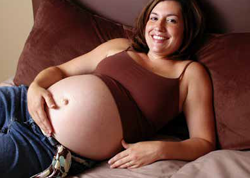
The proportion of teenage mothers in Australia is falling, with a drop in teenage mothers from 4.9% to 3.7% of all mothers between 2002 and 2011, according to the AIHW's latest Australia's mothers and babies report, released in December 2013.
Australia's mothers and babies 2011 shows teenage births have a range of increased health risks compared with other births.
'Teenage mothers have higher proportions of low birthweight babies compared with women in other age groups and the highest fetal, neonatal and perinatal death rates,' said Professor Elizabeth Sullivan, from the AIHW's National Perinatal Epidemiology and Statistics Unit.
'Teenage mothers are also more likely to have smoked during pregnancy-of all teenage mothers, almost 36% reported smoking during pregnancy, compared with 13% of all mothers.'
Indigenous mothers were more likely to be teenagers than non-Indigenous mothers- around 19% of Indigenous mothers were teenagers compared with 3% of non-Indigenous mothers.
The report shows that in 2011, a total of 297,126 women gave birth to 301,810 babies. This was a small rise in the total number of births compared with 2010 (almost 1%) and a rise of over 18% since 2002.
'The average age of women having their first baby has increased steadily from 27.6 years in 2002 to 28.3 years in 2011,' Professor Sullivan said.
The caesarean section rate has shown an upward trend in the 10 years to 2011, rising from 27% to a peak of just over 32% between 2002 and 2011.
'In 2011, caesarean section rates ranged from 18% for teenage mothers to 49% for mothers aged 40 and over,' Professor Sullivan said.
For Indigenous mothers, the caesarean section rate was 27%, significantly lower than for non-Indigenous mothers (32%).
'This may be partially explained by the younger age of Indigenous mothers of 25.3 years compared to 30.2 years for non-Indigenous mothers,' Professor Sullivan said.
In 2011, just over 6% of liveborn babies were of low birthweight (less than 2,500 grams), and among mothers who smoked during pregnancy the proportion of low birthweight babies was nearly double (11%).
Download Australia's mothers and babies 2011.
More than half of permanent aged care residents show signs of depression
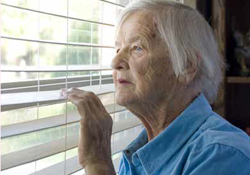
Entry into residential aged care can be challenging, with its changes to routine, loss of independence and physical relocation to a new environment. The presence of depression adds to this.
The AIHW recently released the first in-depth review of available administrative data to explore the prevalence and characteristics of people with symptoms of depression in residential aged care.
Depression in residential aged care 2008-2012, shows that symptoms of depression among permanent aged care residents are common, with over half of permanent aged care residents showing signs of depression in 2012.
The analysis draws on the Cornell Scale for Depression (CSD) which is a tool used as part of the Aged Care Funding Instrument, or ACFI.
'At 30 June 2012, 52% of all permanent aged care residents had a CSD score that indicated symptoms of depression,' said Head of the AIHW's Continuing and Specialised Care Group Dr Pamela Kinnear.
There was a slightly higher rate in women (53%) than men (51%).
The report shows about 45% of all people who were newly admitted to residential aged care between 2008 and 2012 had symptoms of depression. Furthermore, the proportion with symptoms rose with each successive year over this period.
'Newly-admitted residents with a CSD score indicating symptoms of depression had higher care needs, with 73% classified as high care, compared with 53% of newly-admitted residents without symptoms,' Dr Kinnear said. The odds of newly-admitted residents with symptoms of depression having behaviours that influence care needs were more than double the odds for those without symptoms.
'Just over two-thirds of permanent aged care residents who had symptoms of depression had a confirmed medical diagnosis of depression, or were having a diagnosis sought,' Dr Kinnear said.
Women were more likely than men (69% and 64% respectively) to have been diagnosed or having a diagnosis sought.
The report is the largest analysis of depression symptom prevalence in Australian residential care facilities, and the most comprehensive analysis of ACFI data to date.
Download Depression in residential aged care 2008-2012.
One in 10 Aussies used mental health services in 2010-11

In 2010-11, 9% of the Australian population (or 1.9 million Australians) received mental health services.
The report, Mental health services in Australia- in brief 2013, was released on world mental health day, a day for global mental health education, awareness and advocacy. The report provides an overview of how the health and welfare system responds to the needs of Australians affected by mental illness.
Mental health is an important health issue in Australia. An estimated 7.3 million Australians aged between 16 and 85 (45%) will experience a mental health-related disorder in their lifetime. And, 1 in 5 Australians in this age range experience symptoms of a mental disorder each year.
'This compendium document published annually provides an easily accessible summary of key mental health service and resource data,' said Head of the AIHW's Continuing and Specialised Care Group, Dr Pamela Kinnear.
The publication summarises the key findings from the AIHW's Mental health services in Australia report which is updated regularly as new data become available.
'Mental health services in Australia are provided through hospitals and other residential care facilities, hospital-based outpatient care services, community mental health services, and consultations with GPs and specialists,' Dr Kinnear said.
There were an estimated 243,444 mental health- related public hospital emergency department occasions of service in 2010-11.
'This is an increase of almost 3% compared to the estimated number of visits in 2009-10,' Dr Kinnear said.
Over 80% of mental health-related emergency department occasions of service were classified as urgent (the patient should be seen within 30 minutes) or semi-urgent (the patient should be seen within 60 minutes).
Almost $6.9 billion was spent on mental health- related services in Australia during 2010 -11, equating to $309 per person.
'Spending on mental health services increased by almost 6% per Australian per year over the five years to 2010-11,' Dr Kinnear said.
Download Mental health services in Australia- in brief 2013 or visit the Mental health services in Australia website.
new releases
Youth detention population 2012-13
This report presents information on the youth detention population in Australia, focusing on quarterly trends from June 2009 to June 2013. On an average night, there were about 1,000 young people in detention, about half of whom were unsentenced.
Published 10 December 2013
Download Youth detention population in Australia 2013
Specialist homelessness services 2012-13
This report presents the findings of the Specialist Homelessness Services Collection for 2012-13, and describes the clients who received specialist homelessness support, the assistance they sought and were provided, and the outcomes achieved for those clients.
Published 17 December 2013
Download Specialist homelessness services 2012-13
Type 2 diabetes in Australia's children and young people: a working paper
This working paper presents, for the first time, national incidence and prevalence estimates of type 2 diabetes in Australia's children and young people, and looks at national data sources that could be used to monitor this in the future.
Published 19 February 2014
Download Type 2 diabetes in Australia's children and young people: a working paper
Health care expenditure on cardiovascular diseases 2008-09
Cardiovascular disease (CVD) makes a considerable impact on the health of Australians and has the highest level of health-care expenditure of any disease group. This report looks at spending on CVD, and shows that between 2000 - 01 and 2008-09, health-care expenditure allocated to CVD increased by 48% from $5,207 million to $7,717 million.
Published 25 February 2014
Download Health care expenditure on cardiovascular diseases 2008-09
Dental and oral health web pages
This web update provides information on Australians' dental and oral health, patterns of dental visits, and costs associated with dental care.
Published 26 February 2014
See Dental and oral health web pages
National breast cancer and cervical screening participation web pages
This web update provides the latest national participation data for Australia's breast and cervical cancer screening programs in 2011 and 2012.
Published 27 February 2014
See Cancer screening programs in Australia
Health expenditure Australia 2011-12: analysis by sector
This report expands upon the analysis presented in Health expenditure Australia 2011-12 to further explore expenditure on particular categories of health goods and services, including hospitals, primary health care, other recurrent health expenditure and capital expenditure.
Published 21 March 2014
Download Health expenditure Australia 2011-12: analysis by sector
Youth justice in Australia 2012-13
This report presents information on young people aged 10 -17 under youth justice supervision, both in the community and in detention, during 2012-13. It also examines trends over the preceding 5-year period.
Published 17 April 2014
Download Youth justice in Australia 2012-13



